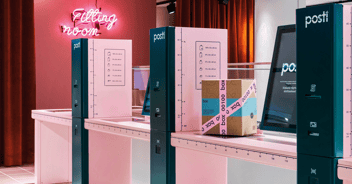A simplified customer journey
The customer journey typically looks something like this:
- First, the customer or consumer finds a new product or service. In today's world, the vast majority of people (if not everyone) start their journey online from the digital world, whether it be social media, a search engine, or something similar.
- The second step is consideration or comparison, depending on the situation. In the case of repurchase, you might go through this phase as well (a kind of a re-consideration phase). This comparison and consideration phase can occur in multiple channels, including online search, social media, or in dedicated peer channels like LinkedIn groups.
- After consideration, the customer usually goes into purchase mode and starts making contact with the selected product or service vendor, either through their webshop, chat, phone, or convenient offline location. This is the step where the major question is: where to buy? This step might take time and quite a bit of convincing depending on the type and size of purchase.
- The next step in the journey is something that can be called onboarding. This is the step where the customer gets the new product or service – and where it might be convenient to have some guidance, support, or even help to get the most out of the new purchase.
- Then comes the ownership phase of the product or service. During the ownership phase, the customer might turn into a step where they’ll make repurchases. Especially in a B2B context, this is the phase where the customer needs to be nurtured to perhaps become a loyal customer or advocate for the product or service.
- Finally, the customer journey might end with “off-boarding” or end-of-customership.
So, as you can see the customer journey, even when simplified, has multiple steps or touchpoints where the “ordering” part is just one step. All of these steps can be supported digitally since many of them occur in the digital world or a digital channel is the only way to reach customers conveniently.
Companies must be ready to support, help and push the customer along this journey in the digital world and in digital touch points. This also creates a great opportunity to understand the customer better. Creating this connection all the way to the end customer or end-user of the product is enabled by the digital world in ways that weren’t possible before.
Digital touchpoints in the customer journey
Marketing is typically responsible for giving first impressions to potential customers when companies are acquiring new customers. This is in many cases done in the digital world through various content shared on websites, social media channels, and events. These are owned, paid, or earned digital channels where marketing is trying to engage customers. Companies have to be able to master new digital channels and the way content is presented and created on them. This is where various marketing technology systems come into play to help in this process – systems like content management (CMS) or marketing automation. Companies have to be able to present their offering, whether products or services, in a compelling way. This task in many cases requires technology support to manage product and service information such as product information management (PIM).
From the very beginning of the customer journey, companies need to start identifying customers and managing data attached to them in order for marketing to qualify these potential customers and push them forward on their purchasing journey. Managing customer data and the qualification process starts requiring support from technology from systems like Customer Relationship Management (CRM) or a Customer Data Platform (CDP).
As the customer journey gets closer to the purchase phase of the journey, typically sales takes a key role. The purchase phase can be supported by eCommerce channels but it can also be supported by systems like CPQ (Configuration, Price, Quote) in cases where the product or service is complex and configurable to customer needs. This is also the step where marketing and sales should work together in managing product and service portfolios, pricing, and campaigns to further boost sales. In this step, sales and marketing should be having a common view on the customer data, customer segmentation, and the processes to manage valuable customer data.
During the onboarding or ownership phase, customer service steps in. Ideally, customer service should also be able to access common customer data and handle any inquiries coming from the customers. This is where technology yet again can help, through the implementation of various digital contact points and workflow management of customer service cases.
During the loyalty and repurchase phase, the customer experience is measured and the company may be able to turn customers into loyal ones – encouraging them to make new purchases. In many cases, companies can offer service portals where customers can register and log in to receive value-adding content and services linked to the product or service. This portal can be a dealer portal in a more complex value chain offering different account services and data services enhancing customer experience and building loyalty. There are also various levels of customer loyalty and how customers are engaged to make new purchases and all these can be also supported by technologies like loyalty platforms and marketing automation.
As you can see from this simplified explanation of the customer journey and how digital tools can help in the whole sales process, it’s clear that a non-digital sales process is rare. But it’s also evident that this isn’t a simple task to manage the whole customer journey and develop support for digital sales.
The need for a competent partner
Vincit can assist you in building a full picture of the digital sales process with our end-to-end commerce approach. In order to succeed in this game, companies must master all levels of development: strategy, experience, processes, and technology. This is where Vincit can help – contact us to discuss more!



